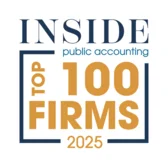Originally published July 19, 2021 | Updated February 10, 2022 and June 27, 2025
The California Governor signed Assembly Bill 150 on July 16, 2021. This alert focuses on the Small Business Relief Act portion of the bill, which established a California pass-through entity (“PTE”) elective tax. On February 9, 2022, Governor Newsom signed Assembly Bill 87, making important legislative corrections and updates to the PTE tax rules. On June 27, 2025, Governor Newsome signed Senate Bill 132, extending the program and making some critical changes.
California joins several other states that have created a PTE tax, providing qualified pass-through entity owners a workaround to the federal $10,000 limitation on state and local tax (“SALT”) deductions.
PTE Tax Eligibility
The PTE tax is effective for elective qualifying entities for tax years beginning on or after January 1, 2021, through December 31, 2030 with the extension granted in S.B. 132.
Qualifying entities include partnerships or S corporations with owners that are corporations, individuals, fiduciaries, estates, or trusts. Following the passage of A.B. 87, pass-through entities with partnerships as partners are now included in the definition of a qualified entity, allowing them to make the PTE tax election. However, partnerships remain non-qualified taxpayers—their income is excluded from the PTE tax base and they receive no PTE tax credit.
“Qualified taxpayers” include individuals, fiduciaries, estates, and trusts (excluding corporations) that consent to have their pro-rata or distributive income subject to the PTE tax. Under A.B. 87, single-member LLCs (SMLLCs) owned by individuals, estates, or trusts are now considered qualified taxpayers and may be included in the PTE tax base.
PTE Tax Structure
The PTE tax rate is 9.3% of qualified net income, defined as the qualified taxpayers’ pro-rata or distributive income subject to California income tax.
- For California residents, the pre-apportioned income of the qualifying entity is included in the PTE tax base.
- For nonresidents, only the California-source portion of the qualifying entity’s income is included.
Under A.B. 87, guaranteed payments are now included in the PTE tax base for qualified taxpayers.
The income of corporations, disregarded entities (other than eligible SMLLCs), and other non-qualified taxpayers remains excluded from the PTE tax base.
PTE Owner Tax Credit
A qualifying taxpayer may claim a nonrefundable credit equal to 9.3% of their qualified net income subject to the PTE tax. Any excess credit may be carried forward for up to five years.
A.B. 87 introduced two key updates:
- The PTE tax credit can now reduce tax liability below the California Tentative Minimum Tax (TMT).
- The credit for taxes paid to other states (OSTC) must now be claimed before the PTE tax credit (previously it was claimed after), preventing potential permanent loss of OSTC benefits.
PTE Tax Election and Payments
The PTE tax election must be made annually on an original, timely filed return. The election is irrevocable for that year and binding on all owners.
Payment schedule:
- For taxable years beginning on or after January 1, 2021, and before January 1, 2022, the PTE tax is due by the return’s original due date (ignoring extensions).
- For taxable years beginning on or after January 1, 2022, and before January 1, 2026, the greater of 50% of the prior year’s PTE tax or $1,000 is due by June 15 of the taxable year. Failure to make this payment by June 15 invalidates the election for that year. The remainder is due by the return’s original due date (ignoring extensions).
- For taxable years beginning on or after January 1, 2026, in order to maximize the allowable credit, the greater of 50% of the prior year’s PTE tax or $1,000 is due by June 15 of the taxable year. Under S.B 132, failure to make this payment by June 15 will no longer invalidate the election for the year, however, there will be a 12.5% reduction to the allowable credit on the amount of any shortfall of the initial payment paid by the June 15th due date.
Summary of Key Legislative Updates (A.B. 87 and S.B. 132)
|
Previous Rule (A.B. 150)
|
New Rule (A.B. 87)
|
New Rule (S.B. 132)
|
|
PTE credit limited to offset only regular tax above TMT.
|
PTE credit can now reduce tax below TMT.
|
PTE credit can now reduce tax below TMT.
|
|
Guaranteed payments excluded from qualified net income.
|
Guaranteed payments included in qualified net income.
|
Guaranteed payments included in qualified net income.
|
|
SMLLCs and owners not eligible qualified taxpayers.
|
SMLLCs owned by individuals, estates, or trusts are now qualified taxpayers.
|
SMLLCs owned by individuals, estates, or trusts are now qualified taxpayers.
|
|
PTEs with partnership owners were ineligible to elect.
|
PTEs with partnership owners may now elect; partnerships remain non-qualified taxpayers.
|
PTEs with partnership owners may now elect; partnerships remain non-qualified taxpayers.
|
|
OSTC claimed after PTE credit.
|
OSTC now claimed before PTE credit.
|
OSTC now claimed before PTE credit.
|
|
Business credit utilization capped at $5M for 2020–2022 (A.B. 85).
|
Cap eliminated for years beginning on or after 1/1/2022.
|
Cap eliminated for years beginning on or after 1/1/2022.
|
|
NOL utilization suspended for taxpayers with >$1M net business income (A.B. 85).
|
Suspension removed for years beginning on or after 1/1/2022.
|
Suspension removed for years beginning on or after 1/1/2022.
|
|
Initial payment must be made by June 15th of the current tax year, or the election cannot be made.
|
Initial payment must be made by June 15th of the current tax year, or the election cannot be made.
|
Initial payment must be made by June 15th of the current tax year to maximize the credit.
|
|
The initial payment must be the greater of $1,000 or 50% of the prior year PTET. Failure to make this payment timely results in forfeit of the PTET election.
|
The initial payment must be the greater of $1,000 or 50% of the prior year PTET. Failure to make this payment timely results in forfeit of the PTET election.
|
Initial payment calculation remains unchanged, however, shortfall or failure to make the initial payment will not result in forfeit of the election. Instead, there will be a 12.5% reduction to the allowable credit on the amount of any shortfall of the initial payment paid by the June 15th due date.
|
Summary of Benefits and Key Considerations
Benefits
- Provides a workaround to the federal $10,000 SALT deduction limitation.
- Allows both resident and nonresident qualified taxpayers to claim a California income tax credit.
- Expands eligibility to include partnerships with partnership owners and SMLLCs owned by individuals, estates, or trusts.
- Permits the PTE credit to offset taxes below TMT and enhances OSTC utilization.
Key Considerations
- The election is annual, irrevocable, and must be made by the original due date of the return.
- A June 15 prepayment is required each year to maintain eligibility for tax years beginning before January 1, 2026. For tax years beginning on or after January 1, 2026, the June 15 prepayment is required to maximize the allowable credit.
- Entities should re-evaluate their structures and ownership to determine whether the updated rules increase their benefit under the PTE election.
- Entities should evaluate situations in which there was a larger than typical amount of QNI in the prior year, resulting in a disproportionate amount due June 15 of the current year. Under S.B. 132, they have the option to intentionally underpay for the current year, thus relieving some potential cash flow strain, however, a significant amount of the credit may no longer be allowed and opportunity cost versus actual cost should be considered.
Next Steps
Partnerships and S corporations eligible for the PTE election should assess whether making the election could maximize their owners’ federal SALT deductions. Entities previously ineligible (due to partnership ownership or SMLLC structure) should reconsider under the A.B. 87 changes. Qualified taxpayers may wish to recalculate their PTE credit and evaluate any expanded opportunities for deduction or credit utilization.
For more information, please contact your HCVT tax professional or reach out to Douglas Andersen or Goran Jovicic.



